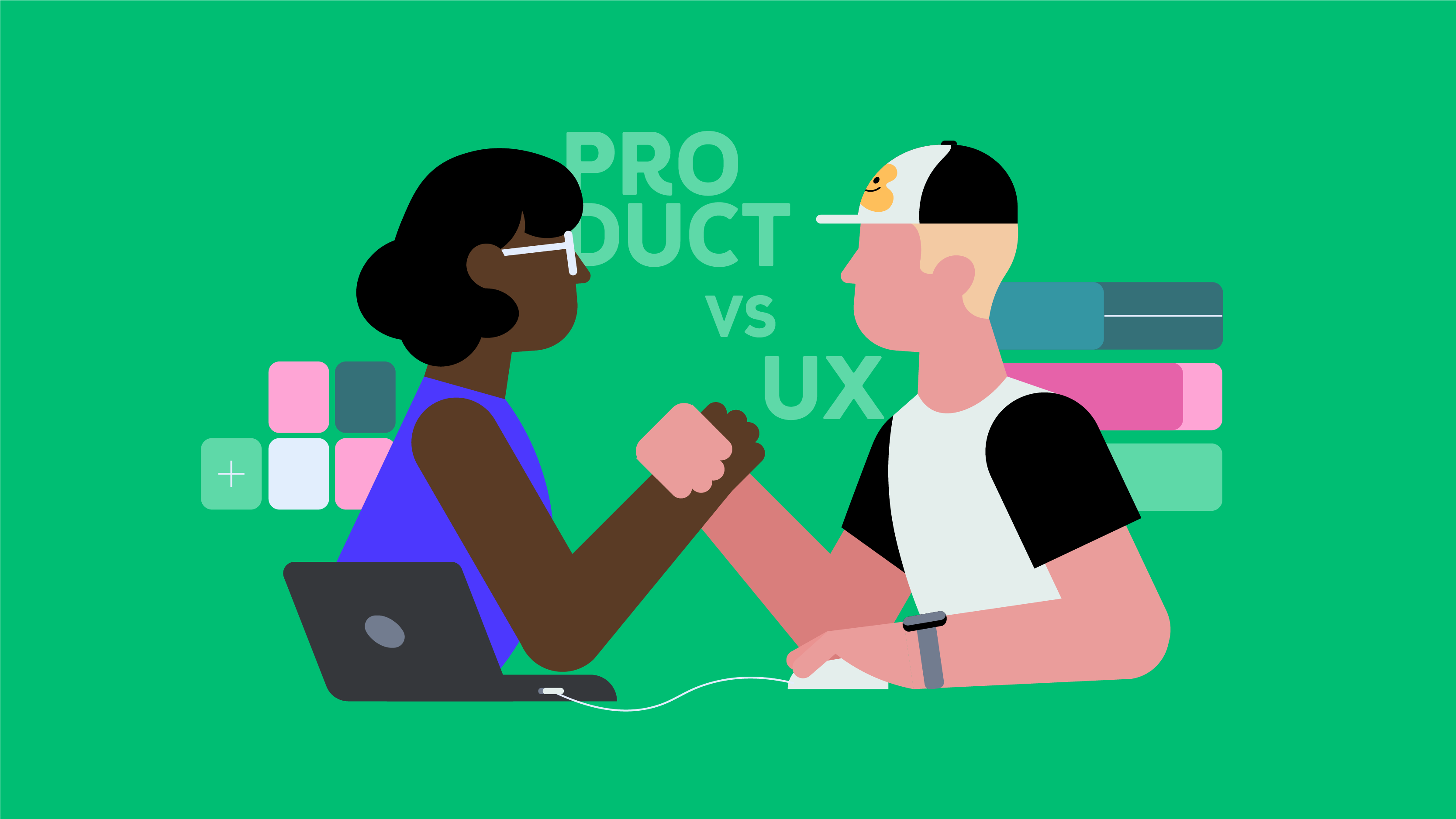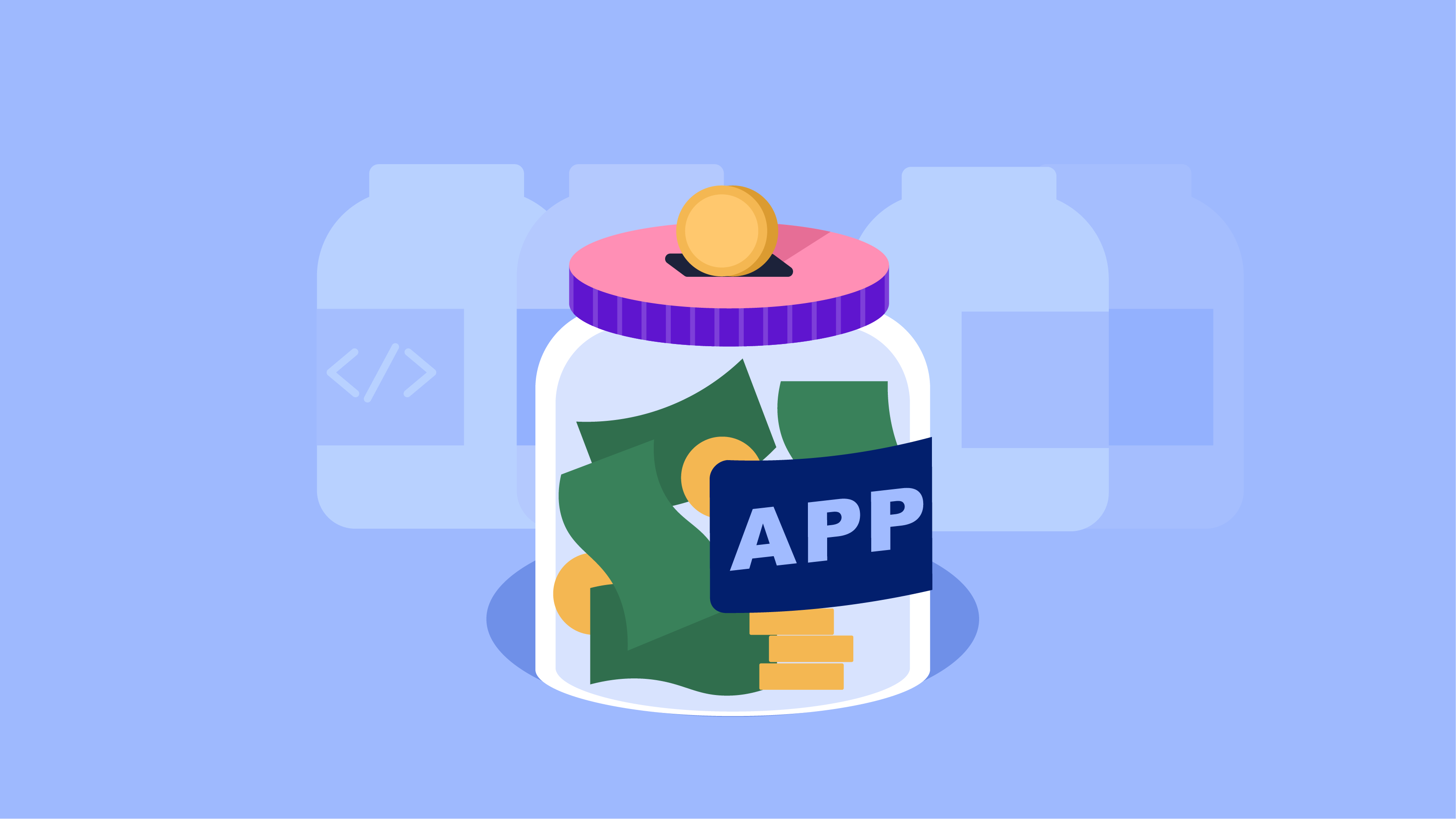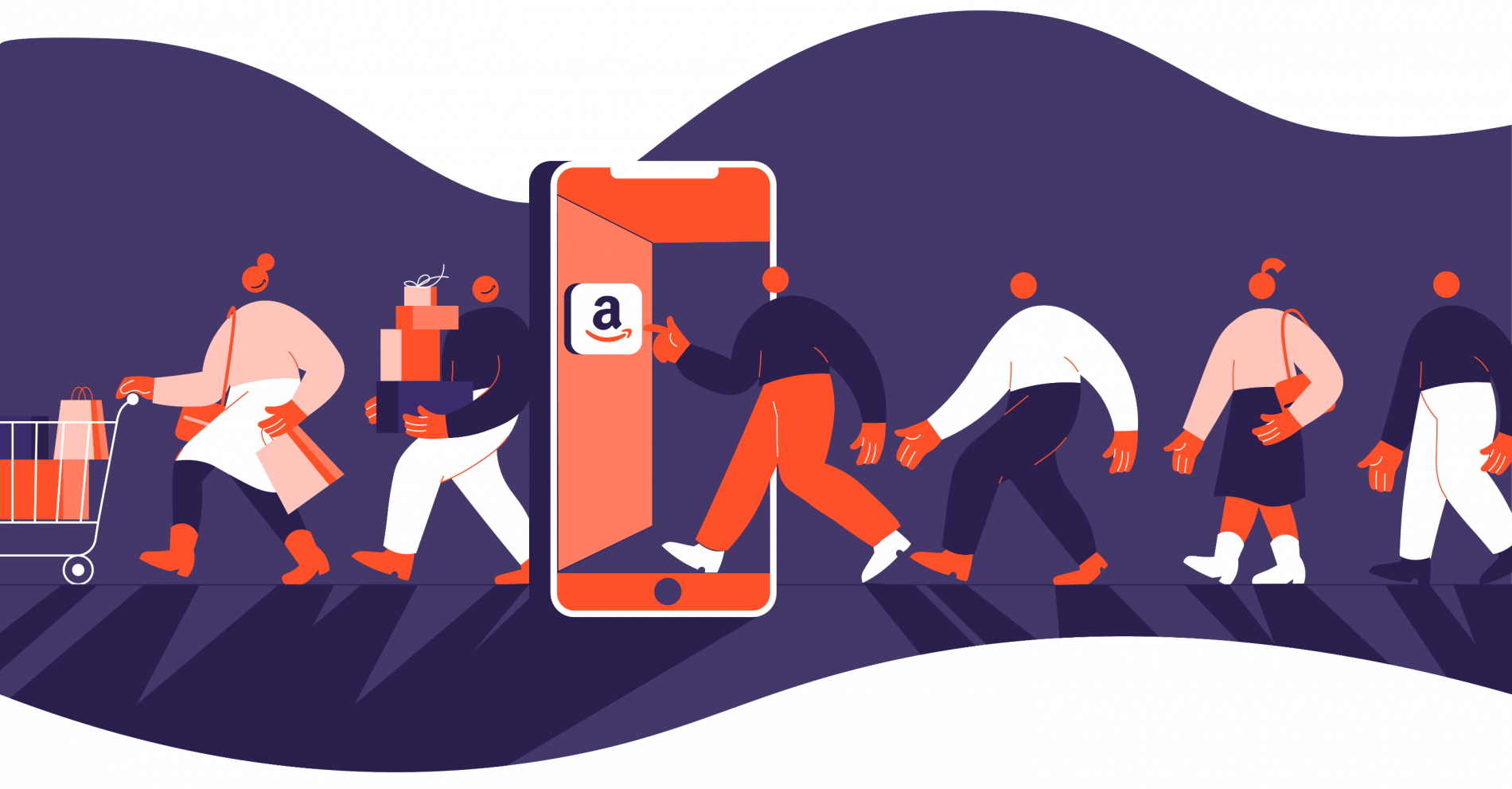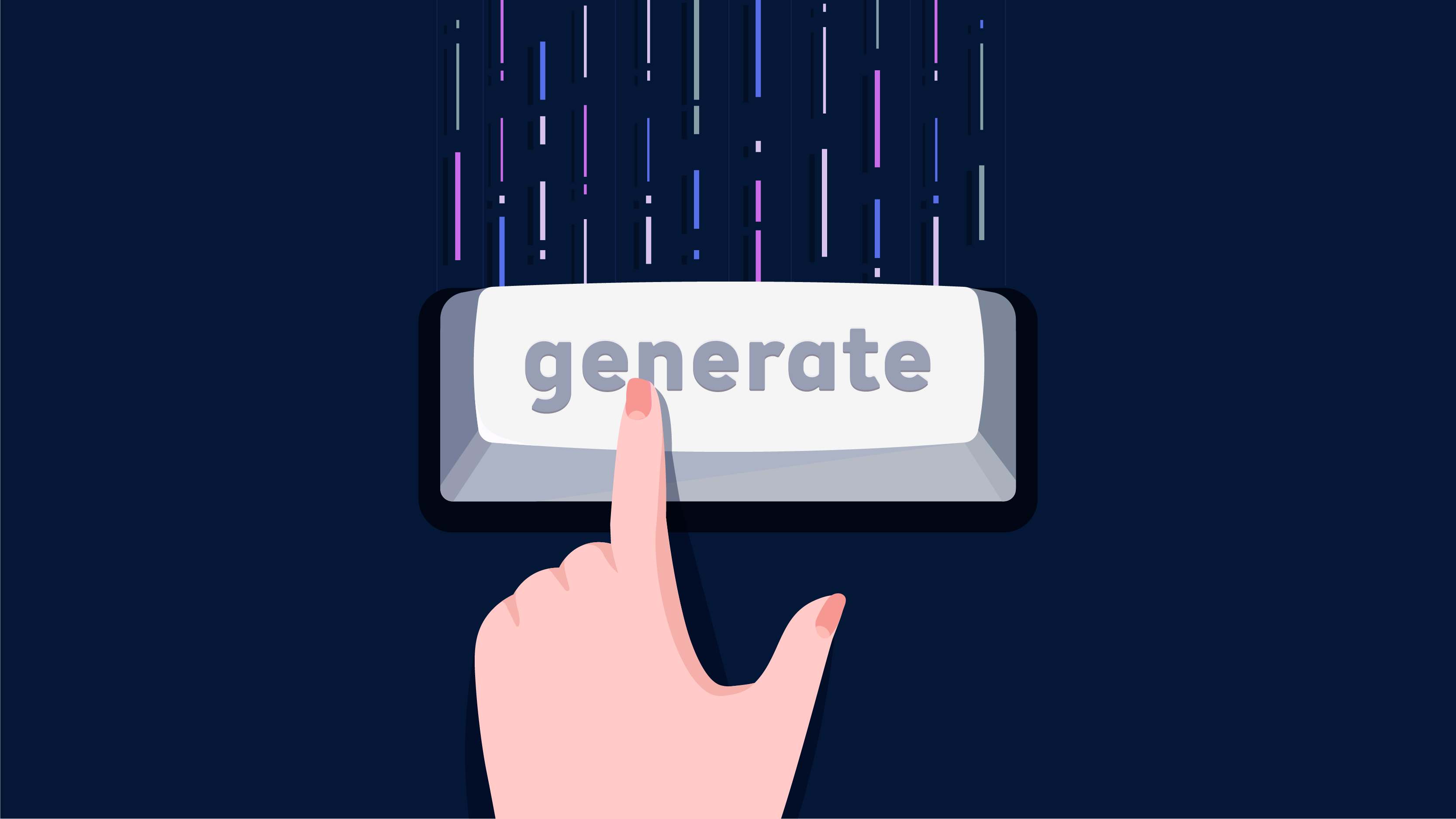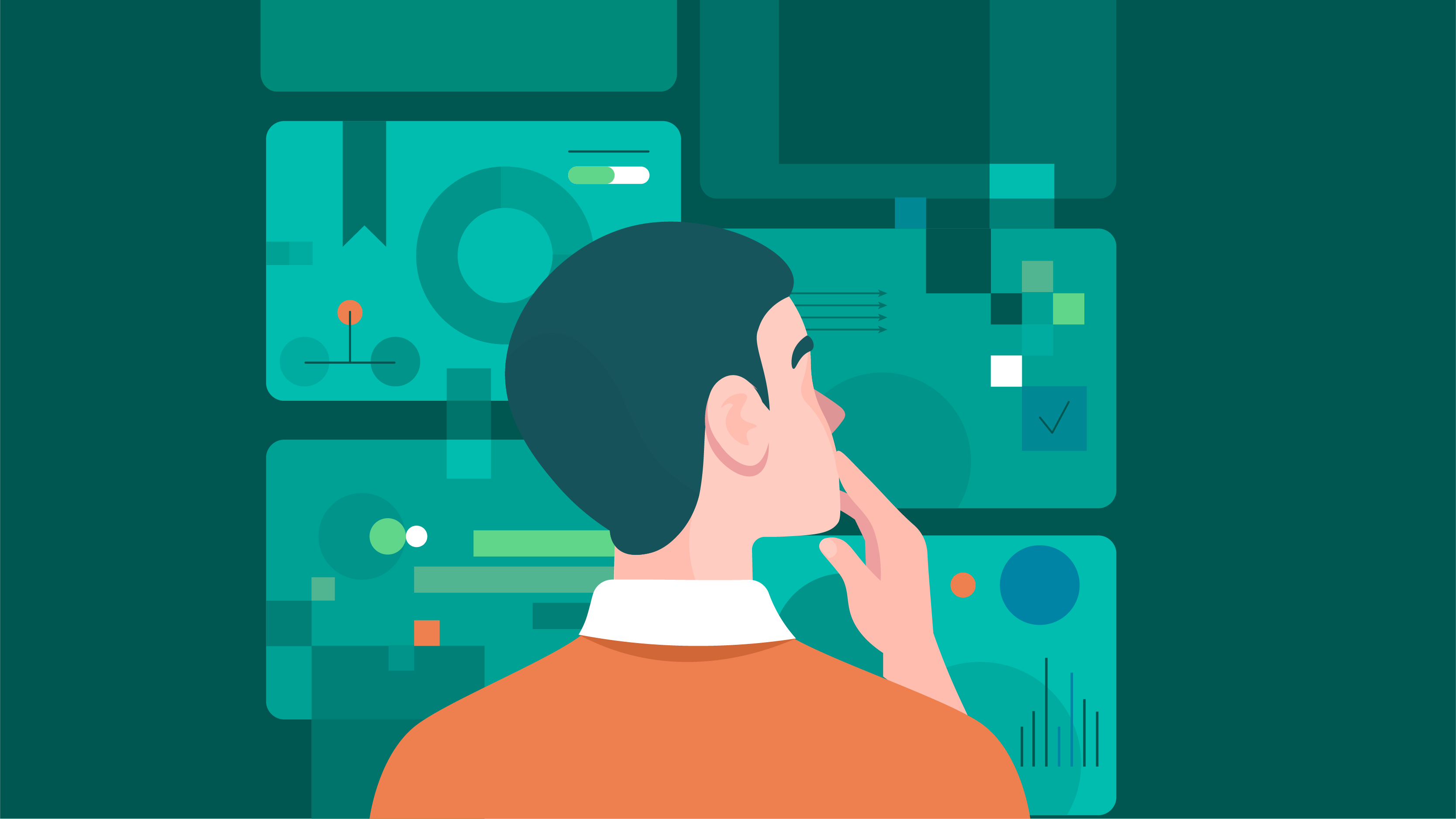The healthcare industry is one of the most important areas that directly affects our lives. The future of human civilization depends on the development of medicine and the ability of engineers to implement the latest technological solutions in healthcare products.
Telemedicine is a consequence of the close interaction of technology and medicine. And it is an incredibly popular direction in the healthcare mobile app.
In our new article, we will talk about medical and healthcare digital products, their features, and differences. We will also consider the basic features of telemedicine solutions and the trends that make them so popular and effective.
What Is Healthcare App Development and Why Is It So Important?
Healthcare app development is the process of creating software applications specifically designed for use in the healthcare industry. These apps’ functionality is focused on healthcare professionals’, patients’, or healthcare organizations’ needs and helps to perform various functions related to healthcare management, diagnostics, treatment, and so on.
Healthcare apps can run on various devices, including smartphones, tablets, and computers. They can provide users with convenient access to healthcare services and information, allowing them to schedule appointments, access medical records, and receive telehealth consultations from the comfort of their own homes. This is especially valuable in remote or underserved areas.
Moreover, healthcare apps can empower patients to take control of their health by providing tools for tracking vital signs, medications, and chronic conditions. With a proper UI/UX design, they can also deliver personalized health information and reminders, fostering better user engagement and sharing valuable data for healthcare app developers.
Why is healthcare mobile app development so important?
Healthcare mobile app development is an essential part of the industry. Such products simplify administrative tasks, such as appointment scheduling, billing, and record-keeping, for healthcare providers. It improves efficiency and reduces administrative burdens, allowing professionals to focus on patient care and provide a more personalized treatment approach.
Here are some other benefits quality healthcare app can bring.
- Research and access to valuable data. Every healthcare app is an important source of medical data. So, it contributes to medical research by collecting anonymized patient data. This can be useful in the development of new treatments, drug discovery, and disease management.
- Education. Good healthcare app can provide easy access to a wealth of health information, allowing users to make informed decisions about their well-being. Such an app can also offer educational content on various health topics.
- Cost reduction. Proper healthcare app promotes preventive care, early intervention, and efficient healthcare management, so it helps to reduce the cost of medical services in the long run.
- Regulatory compliance. The healthcare industry is highly regulated, and every healthcare app must comply with various privacy and security standards, such as the Health Insurance Portability and Accountability Act (HIPAA) in the United States, for example. Such regulations are very strict but essential for safeguarding patient data.
- Innovation and customization. These two points are the cornerstone of healthcare mobile application development. Developers continue to innovate and create new healthcare apps to address specific healthcare needs and challenges, ranging from chronic disease management to mental health support.
Also, the demand for specific healthcare app has grown significantly, driven by the increasing use of smartphones and the need for more accessible and convenient healthcare services. Good products address critical healthcare needs, enhance patient engagement, and streamline healthcare processes.
The ongoing growth of technology and the increasing demand for healthcare solutions make healthcare mobile app development a very promising and highly dynamic field.
Stay ahead of telemedicine trends with Cadabra Studio. Contact us to explore how we can integrate the latest innovations into your app. Let’s talk!
Healthcare App vs. Medical App: What Is the Difference?
The terms ‘medical app’ and ‘healthcare app’ can be interchangeable, but they have slightly different meanings though. And, of course, medical mobile app development can have different focuses, requirements, and objectives.
In most cases, telemedicine applications are the results of medical app development because they perform more specific functions and require more strict regulations. This may relate to security and data usage requirements, certain features, or even design (accessibility for different categories of patients, convenience, etc.).
In order to understand the essence of telemedicine products, it is necessary to define the difference between the creation of a healthcare app and a medical app development. Here is an overview of the key differences between these two processes.
Medical app development
Medical apps are typically more focused on clinical and diagnostic functions. They are well-suited for the needs of healthcare professionals, including doctors, nurses, and other medical practitioners. The main purpose of the medical app development is to create a perfect custom product that can assist in patient care, diagnosis, and treatment.
In other words, these apps are designed to support specific medical tasks, such as medical imaging, drug interaction checking, ECG (electrocardiogram) analysis, or medical reference databases. That is why medical mobile app development often requires regulatory approval and compliance with strict standards, as the final product can directly impact patient care and medical decisions.
Medical apps can be used in radiology, pathology, medication management, and medical record access. So, as you can see, full regulatory compliance and control is an essential measure; it is simply a necessity.
Healthcare app development
Healthcare apps can have a broader scope and are designed for a wide range of users, including patients, caregivers, and healthcare providers. They focus on various aspects, including wellness, fitness, chronic disease management, and healthcare administration.
Modern healthcare app may offer features such as appointment scheduling, telehealth consultations, fitness tracking, medication reminders, mental health support, and general health information.
As far as it does not provide specific treatment functionality and is designed for wide usage, it may not always require the same level of regulatory oversight as medical apps. However, the healthcare app may still need to comply with healthcare privacy regulations, such as HIPAA in the United States, if it handles sensitive patient data.
In most cases, healthcare app development focuses on fitness tracking apps, symptom checkers, wellness and nutrition apps, and patient portal apps for accessing medical records.
As you can see, there is some overlap between the average medical app and the healthcare app. The key distinction lies in their primary focus and intended users. Medical apps are typically more focused on healthcare professionals’ needs and aim to assist in clinical tasks, whereas the typical healthcare app has a broader consumer-oriented focus and aims to support different users in managing their health and accessing healthcare services. Both types of apps play essential roles in the healthcare ecosystem, catering to different needs within the industry.
Key takeaways
Medical App Development | Healthcare App Development | |
Focus | Clinical and diagnostic functions. | Broader scope for patients, caregivers, and healthcare providers. |
Target Users | Healthcare professionals (doctors, nurses). | Patients, caregivers, healthcare providers. |
Purpose | Assist in patient care, diagnosis, and treatment. | Wellness, fitness, chronic disease management, healthcare administration. |
Regulatory Compliance | Stringent standards and approval due to direct impact on patient care. | May not require the same level as medical apps but needs to comply with healthcare privacy regulations (e.g., HIPAA). |
Examples | Medical imaging, drug interaction checking, ECG analysis. | Appointment scheduling, telehealth consultations, fitness tracking, mental health support. |
Medical and Healthcare Mobile App Development in Telemedicine
Telemedicine (a combination of “telecommunications” and “medicine”) is a concept that describes the combination of modern technologies and healthcare services, the main purpose of which is to provide remote consultations and services. Medical and healthcare apps in this field provide seamless communication between patients and medical professionals, overcoming geographical boundaries and time constraints.
Medical and healthcare mobile app development includes creating applications for telemedicine in such a way that they can offer users a safe and convenient interaction. Such medical and healthcare apps include video calling, secure messaging, and even medical document sharing.
Why telemedicine apps are important
Telemedicine and healthcare app development were popular long before the COVID-19 pandemic, but at this time, there was a boom in this industry. The pandemic has shown that remote treatment is indeed a significant improvement that allows the provision of quality medical services to people with disabilities and those without access to hospitals.
So, every telemedicine and healthcare app has garnered huge significance for several reasons:
- Accessibility. This is the most important part of healthcare mobile application development. These applications break down the barriers to healthcare access, particularly in rural or underserved areas. They provide medical care to those who may have limited options for in-person consultations.
- Time-efficiency. Telemedicine and healthcare app development help to save time for both patients and medical personnel. Users can schedule appointments more quickly, reducing the wait time for patients seeking medical advice and treatment.
- Reduced costs. Proper telemedicine and healthcare app can be cost-effective, saving both patients and healthcare systems money by eliminating travel expenses and reducing the burden on physical facilities.
- Continuity of care. Thanks to improvements in healthcare mobile app development, patients with chronic conditions can receive continuous care and monitoring through telemedicine. It helps to manage their health in a more effective way.
- Specialized care. Using proper telemedicine healthcare app, patients can access specialized medical expertise. In many cases, such services may not be locally available, so healthcare app development, and telemedicine particularly, provide the ability to get second opinions and consultations with experts worldwide.
Every modern healthcare mobile app that is suited for telemedicine offers unparalleled convenience because it allows patients to consult with healthcare professionals without the need for time-consuming commutes, waiting rooms, or disruptions to their daily routines. In times of crises, such as the COVID-19 pandemic, telemedicine applications have played a crucial role in providing remote healthcare while minimizing the risk of virus transmission.
By prioritizing accessibility, the healthcare mobile app changes the way patients receive medical care and allows them to take charge of their health.
Key takeaways
- Telemedicine applications provide remote consultations and services through modern technologies.
- They include features like video calling, secure messaging, medical document sharing, etc.
- They break down healthcare access barriers, particularly in rural or underserved areas, and facilitate quicker appointment scheduling, reducing wait times for patients and medical personnel.
- Telemedicine also enables continuous care and monitoring, especially for patients with chronic conditions. It provides access to specialized medical expertise globally, offering second opinions and consultations.
Let’s discuss how the latest trends in telemedicine app development can help to turn your ideas into reality. Contact us now.
The Most Important Features of Modern Telemedicine Apps
Since the main task of a healthcare app in the field of telemedicine is to conduct remote consultations between patients and providers of medical services, all their functionality should be sharpened for this. In addition, it is good practice for every healthcare app to monitor and track patients’ vital parameters and chronic diseases in order to provide proactive care.
So, there are several features in healthcare mobile app development that contribute to the effectiveness of such products and user satisfaction. Let’s take a closer look at them.
User-friendly interface
Professional design is the foundation of any mobile application development, and it applies not only to a specific healthcare mobile app. However, it is in the field of telemedicine that special attention should be paid to the interface and user experience to create a sense of personalized care and simplify access to product features.
Intuitive design and easy navigation are crucial for users, including both patients and healthcare providers. Clear and concise menus help patients access the necessary services without confusion, saving time and effort.
Secure video conferencing and data sharing
The issue of security and privacy is incredibly important for any healthcare mobile app and telemedicine is no exception. High-quality, secure video conferencing capabilities are essential for virtual consultations. There are several things that help ensure the confidentiality of patient information and compliance with privacy regulations.
First of all, developers must use end-to-end encryption as it is a fundamental security measure in secure video conferencing. It means that the communication is encrypted at both ends (patient and healthcare provider) and can only be decrypted by the intended recipients.
Another essential part of any healthcare mobile app is HIPAA compliance. For telemedicine services in the United States, adherence to the Health Insurance Portability and Accountability Act (HIPAA) is crucial. This involves implementing robust security measures to protect patients’ electronic protected health information (ePHI). No one has the right to use patient data in applications that do not have such compliance.
Also, the development team must think through the access controls and authentication system. Implementing secure and strong access controls ensures that only authorized users can participate in video consultations. This may involve secure login processes and two-factor authentication.
And that is not all. Let’s take a closer look at some other essential security measures.
- Secure data transmission. The transmission of video and audio data in every healthcare app should be secure to prevent interception. Your development team should use Secure Socket Layer (SSL) or Transport Layer Security (TLS) protocols to achieve this goal.
- Secure servers and infrastructure. Telemedicine providers should always utilize secure servers and infrastructure to host video conferencing services. This is a critical part, which includes regular security audits and updates to identify and patch vulnerabilities.
- Recording and storage security. Your telemedicine or healthcare app will record some data to give the medical professional the opportunity to analyze the diagnosing process, check the patient’s answers, etc. The recording is also important for documentation or training purposes, and recorded data should be stored securely, with restricted access to authorized personnel.
- Session timeout and auto logout. Implementing session timeouts and automatic logout features helps protect patient information in case a device is left unattended during a telemedicine session.
- Secure chat and file sharing. If your healthcare app or the telemedicine platform includes chat or file-sharing features, these should also be secured with end-to-end encryption to maintain the privacy of the information exchanged.
Also, we highly recommend ensuring compliance with all the international standards for data protection and privacy, especially if you offer services across borders.
Appointment scheduling and reminders
Users should be able to schedule appointments easily through the app. This feature simplifies coordinating virtual consultations between healthcare personnel and patients. Users, both patients and doctors, benefit from the convenience of scheduling appointments through the app’s user-friendly interface. Typically, this feature allows patients to view the availability of medical professionals, select appropriate time slots, and make appointments without phone calls or manual coordination.
The reminder feature in any healthcare mobile app is critical in reducing no-shows and improving overall adherence to appointments. Automated reminders sent by email, SMS, or in the app notify patients of upcoming virtual consultations, ensuring they are well-prepared and available for their appointments.
This not only improves the efficiency of healthcare delivery but also contributes to better patient outcomes. Healthcare providers also benefit from this feature as it helps them manage their schedules effectively, minimize gaps, and optimize the use of their time.
Electronic Health Records (EHR) integration
Electronic health record (EHR) integration is a key feature of telemedicine and healthcare apps. It enables seamless access and management of patient health information during virtual consultations. Thanks to the integration of the proper EHR system, telemedicine platforms provide medical professionals with a comprehensive view of a patient’s medical history, diagnoses, medications, and treatment plans. This approach improves the quality of care because they can make informed decisions based on a patient’s complete medical data.
This feature also contributes to the efficiency of telemedicine consultations. Rather than relying solely on information provided during a virtual visit, healthcare personnel can refer to historical data stored in the EHR. It helps to use a more accurate assessment of a patient’s health, which not only supports diagnostic and treatment decisions but also facilitates better continuity of care, especially when patients see multiple specialists.
In addition, EHR integration improves overall coordination and collaboration between healthcare teams. In healthcare app development, the unified medical record accessible to authorized professionals promotes a cohesive approach to patient care.
It is all about better communication and collaboration when developing and implementing treatment plans. This feature is particularly important to ensure that virtual consultations are relevant to the broader context of the patient’s medical journey. It facilitates holistic and patient-centered care in telemedicine.
In-app chatting and messaging functionality
This feature is a secure and convenient way of communication between healthcare personnel and patients outside of scheduled virtual consultations. This should be a real-time communication tool that serves various purposes, enhancing overall patient engagement and facilitating ongoing healthcare management.
Patients can use your healthcare app’s chat or messaging feature to ask non-emergency questions, seek clarification on treatment plans, or request prescription refills. It highly contributes to continuous and responsive treatment. This feature is precious for addressing minor concerns or queries without needing a formal appointment, which is very important for patient satisfaction and healthcare accessibility.
On the healthcare provider side, the chat functionality enables efficient communication for tasks such as delivering test results, providing follow-up instructions, or offering general health advice. It streamlines the flow of information. You have to remember that this feature must be designed with privacy and security in mind, as you may use sensitive health information and exchange it through the messaging system. So, think twice about its protection.
The chatting and messaging functionality overall contributes to a dynamic and patient-centric healthcare experience. It complements the scheduled virtual consultations by providing a convenient avenue for non-urgent communication.
Prescription management
This feature allows healthcare professionals to generate and send prescriptions electronically directly to pharmacies. They can review a patient’s medication history, including current medications and allergies, to make informed decisions when prescribing new medications or adjusting existing ones. This ensures a comprehensive approach to medication management during virtual consultations.
Patients receive digital prescriptions, so they do not need physical paper prescriptions. Additionally, prescription management features often include functionalities for automatic renewal requests and reminders, helping patients adhere to their prescribed medication regimens and reducing the risk of medication non-compliance.
Integrating prescription management in your healthcare app also aligns with regulatory standards, ensuring electronic prescriptions meet legal and security requirements. It not only enhances the overall efficiency of virtual healthcare services but also promotes patient safety, ultimately improving health outcomes in a telemedicine setting.
Telemonitoring and wearable device integration
This is a cutting-edge feature that extends the capabilities of virtual healthcare by incorporating real-time data from patients’ wearable devices. It allows for remote monitoring of key health metrics and provides a more comprehensive understanding of a patient’s well-being between virtual consultations.
How does it work? Wearable devices, such as smartwatches or fitness trackers, can collect data on various health parameters such as heart rate, blood pressure, activity levels, and sleep patterns. Your healthcare mobile app with telemonitoring and wearable device integration enables patients to sync their wearable data with the application. This way, professionals can access and analyze this information remotely.
This feature is particularly beneficial for managing chronic conditions, as it provides a continuous stream of objective health data. Medical personnel can identify trends, detect early warning signs, and make data-informed decisions about treatment plans. It also enhances preventive care by allowing healthcare professionals to intervene proactively based on real-time health data, potentially preventing exacerbations or complications.
As you can see, the integration of telemonitoring and wearable devices fosters patient engagement and empowers them to take an active role in their health management. Patients can see the impact of lifestyle choices on their health and receive personalized feedback and guidance.
This feature definitely contributes to a more holistic and proactive approach to healthcare. Real-time data from wearables help doctors offer more personalized and timely interventions.
Some other trendy features
Here are a few more features without which no telemedicine or healthcare app can exist.
- Multi-platform accessibility. Compatibility across various devices, such as smartphones, tablets, and desktops, and operating systems ensures widespread accessibility. This is not even a trend but a condition for the functioning of any modern digital product.
- Payment and billing integration. Secure payment gateways and easy billing processes facilitate smooth transactions for virtual consultations. It is also very important for any digital product that provides access to virtual interaction.
- Language support and translation services. This feature is optional, but it can help you become more accessible to different target audiences and give you a serious competitive advantage. Multi-language support and translation services ensure effective communication between healthcare providers and patients from diverse linguistic backgrounds.
- Telepsychiatry and mental health features. Attention to mental health is an unchanging trend. Fortunately, such services are perfect for remote delivery, so many providers add such consultations as an additional type of service. Specific features catering to mental health services, such as secure video conferencing for therapy sessions and mood-tracking tools, are the game-changers today.
- Customizable features for providers. Healthcare professionals should have the flexibility to customize certain features based on their specialties and preferences. It will also help deliver a more personalized patient experience and faster resolution of treatment issues.
- Feedback and ratings. Feedback mechanisms and rating systems allow users to provide input, helping improve the telemedicine service’s overall quality. Such a feature can be relevant for every healthcare app, as it helps users to make faster decisions about making an appointment for a consultation, choose the optimal specialist, and increase their involvement and contribution thanks to the opportunity to share impressions.
Incorporating these features enhances the overall functionality, accessibility, and security of your applications. At Cadabra Studio, we have solid experience in creating quality and innovative products in the field of healthcare. And we will gladly share it with you. Just contact us to choose the optimal set of features for your telemedicine product.
Key takeaways
- A user-friendly interface is crucial for telemedicine. It is all about intuitive design, easy navigation, and clear and concise menus. It saves time, provides personalized care, and simplifies access to features.
- Secure video conferencing and data sharing ensure confidentiality and privacy in virtual consultations. You may consider such security measures as end-to-end encryption, HIPAA compliance, and access controls, as well as secure data transmission, servers, recording, and storage security.
- Appointment scheduling and reminders improve efficiency, reduce no-shows, and enhance patient outcomes. The basic reminder features are automated reminders via email, SMS, or in-app.
- Electronic health records (EHR) allow for seamless access and management of patient health information. It is beneficial for informed decisions, a comprehensive view of medical history, and improved care. It also contributes to a better continuity of care and improved coordination between healthcare teams.
- In-app chatting and messaging functionality facilitates communication between healthcare personnel and patients. You can use it for addressing non-emergency questions and providing ongoing healthcare management.
- Prescription management generates and sends electronic prescriptions directly to pharmacies. It is important for making informed decisions based on medication history and automatic renewal requests.
- Telemonitoring and wearable device integration incorporates real-time data from patients’ wearable devices for remote monitoring and a comprehensive understanding of patient well-being.
The Latest Trends and Innovations in Telemedicine App Development
Recent advances in technology have generated many innovative features and trends that are shaping the future of telemedicine applications. The industry evolves very quickly. However, there are several trends in healthcare mobile app development that deserve special attention.
Artificial Intelligence (AI) and Machine Learning (ML)
Artificial Intelligence (AI) has emerged as a game-changer in telemedicine, offering a lot of significant benefits. AI-powered diagnostics leverage machine learning algorithms to enhance the accuracy and speed of medical assessments, which is incredibly important in cases when time is everything. Let’s take a closer look at how AI and ML can change the industry, empowering precision healthcare.
First of all, this technology provides the opportunity to deliver faster and more accurate diagnoses. Integrating AI algorithms into your healthcare app helps analyze medical images, such as X-rays and MRIs, with unprecedented speed and accuracy. It assists healthcare providers in making quicker, more precise diagnoses.
Secondly, Artificial Intelligence is essential for accurate and efficient predictive analytics. AI can predict health risks and diseases by analyzing patient data, enabling early intervention and preventive measures. In general, there is no better alternative than this technology in working with data. Artificial intelligence and machine learning are the basis for the successful development of many modern applications, not only the specific healthcare mobile app. However, this is where they bring real benefits and save lives.
Let’s discuss a real example of one of the most relevant trends in the use of AI in optimizing and improving any healthcare mobile app. This is the creation of virtual health assistants – artificial intelligence-driven virtual helpers that become an integral part of telemedicine applications and offer round-the-clock support. They can provide relevant guidance to patients, answer queries, and remind them about medication schedules.
Another significant example of using AI’s capabilities in healthcare mobile app development is the creation of personalized treatment plans. Artificial intelligence collects and analyzes data at an incredible speed. It eliminates the risk of human error, automates the process of working with data, and can also find hundreds of relevant treatments that a doctor might forget about.
Of course, this approach still requires re-examination by a professional because, in some instances, patients need more flexibility in treatment. However, AI can easily adapt treatment plans based on individual patient data, ensuring that medical recommendations are tailored to their specific needs.
Remote patient monitoring
Remote patient monitoring is another trend gaining momentum in the healthcare industry. It is all about the continuous tracking of a patient’s health parameters in real-time, even when they are at home.
Firstly, it is very useful in chronic disease management. Patients with conditions like diabetes, hypertension, or heart disease can significantly benefit from continuous monitoring. Healthcare professionals receive valuable real-time data so they can analyze it and intervene promptly in case of irregularities.
In this case, we are also talking about transferring the data of wearable devices to your healthcare mobile app. As we said before, many telemedicine apps integrate with wearable devices such as smartwatches or fitness trackers, which can monitor vital signs, activity levels, and even ECG data.
Also, remote monitoring helps identify potential issues early, reduce the likelihood of hospital readmissions, and keep patients in a comfortable home environment. This is a great advantage for any healthcare mobile app.
Patients become active participants in their healthcare as they regularly monitor their health data. This fosters a sense of responsibility for their well-being and makes your healthcare app more useful for them.
Telepsychiatry and mental health support
We mentioned this briefly before, but this trend deserves a closer look. Telepsychiatry and mental health support are essential components of telemedicine. The demand for mental health services has surged, and telemedicine digital solutions are evolving to meet this critical need.
Your healthcare mobile app may provide access to virtual therapy sessions, offering secure and confidential video chats with mental health professionals. It is very important for patients who have specific conditions and seek therapy from the comfort of their homes.
Some apps include mood-tracking features, where AI can detect changes in a patient’s emotional state and suggest interventions or connect them with a mental health professional. You can also connect your healthcare app with online mental health communities, where users can share their experiences, find peer support, and access valuable resources.
Such an option can make your healthcare app more precise, accessible, and patient-centric. So, think this opportunity through.
Virtual Reality (VR) and Augmented Reality (AR)
These immersive technologies have gained significant attention in various industries, including healthcare. In the context of telemedicine, VR and AR bring innovative solutions to enhance the delivery of healthcare services and medical experiences.
Virtual Reality
Firstly, let’s talk about Virtual Reality in healthcare app development and its opportunities. You can use VR for training healthcare professionals in a simulated environment. Surgeons, for example, can practice procedures in a virtual space. It helps them to refine their skills and gain experience before performing surgeries on actual patients.
Also, VR enables virtual medical consultations, providing patients with a more immersive and realistic experience of being in a healthcare setting. This can be particularly valuable for mental health therapy, mentioned above, and counseling sessions.
VR also essential in pain management practices. This can be a distraction tool for patients undergoing painful or uncomfortable procedures. Specialists can help alleviate pain and anxiety during medical interventions by immersing patients in a virtual environment.
Augmented Reality
Augmented Reality for healthcare app can help with the medical education of your specialists. Medical students can use AR to visualize anatomical structures, learn about diseases, and understand complex medical concepts.
AR is also a good option for surgical navigation: It helps to provide surgeons with real-time information and guidance. AR assists in precise navigation during surgeries by overlaying relevant data, such as CT scans or vital signs, onto a surgeon’s field of view.
AR allows healthcare professionals to provide remote assistance by overlaying instructions or information onto the real-world view captured by a user’s device. This is particularly useful for guiding less experienced medical staff or first responders in emergencies.
In general, VR and AR for healthcare mobile app create more engaging and interactive healthcare experiences, enhancing patient and provider engagement during virtual consultations or medical training sessions. These technologies enable a more comprehensive and detailed visualization of medical data. This is very useful for better understanding and decision-making.
VR and AR can also improve healthcare apps’ accessibility thanks to a more immersive and compelling telemedicine experience.
Key takeaways
- Artificial Intelligence and Machine Learning are perfect for diagnostics enhancement. AI-powered algorithms improve speed and accuracy in medical assessments, predict health risks and diseases through patient data analysis, and adapt treatment plans based on individual patient data.
- Remote monitoring allows the control of patients’ health parameters in real-time, which is especially beneficial for chronic disease management.
- Wearable device integration uses devices like smartwatches for vital sign monitoring and helps identify potential health issues early, reducing hospital readmissions.
- Telepsychiatry and mental health support provides secure video chats with mental health professionals. It can include mood-tracking features, where AI detects changes in emotional states and suggests interventions.
- Virtual Reality and Augmented Reality are good for training healthcare professionals, immersive virtual medical consultations, pain management, medical education, surgical navigation, and remote assistance.
Looking for reliable guidance in creating a telemedicine app?
Telemedicine is a very important part of healthcare app development and medicine in general. This is not just a trend but a necessity in modern conditions.
New achievements in the world of technology significantly affect the development of this area. They can turn any healthcare mobile app into a state-of-the-art digital product with personalized service and a unique approach to treatment. Such solutions as integrating artificial intelligence and augmented reality vividly demonstrate that medical care can and should be effective.
We at Cadabra Studio have extensive experience in creating medical applications and are happy to help you become successful in this industry. Contact us now, and let’s discuss new opportunities that modern technologies open for digital medicine.






